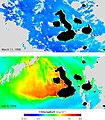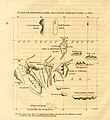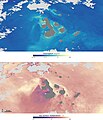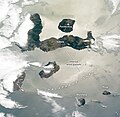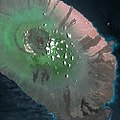Portal:Ecuador
Introduction
 Ecuador, officially the Republic of Ecuador, is a country in northwestern South America, bordered by Colombia on the north, Peru on the east and south, and the Pacific Ocean on the west. It also includes the Galápagos Islands in the Pacific, about 1,000 kilometers (621 mi) west of the mainland. The country's capital is Quito and its largest city is Guayaquil. The territories of modern-day Ecuador were once home to a variety of indigenous peoples that were gradually incorporated into the Inca Empire during the 15th century. The territory was colonized by Spanish Empire during the 16th century, achieving independence in 1820 as part of Gran Colombia, from which it emerged as a sovereign state in 1830. The legacy of both empires is reflected in Ecuador's ethnically diverse population, with most of its 17.8 million people being mestizos, followed by large minorities of Europeans, Native American, African, and Asian descendants. Spanish is the official language spoken by a majority of the population, although 13 native languages are also recognized, including Quechua and Shuar. Ecuador is a representative democratic presidential republic and a developing country whose economy is highly dependent on exports of commodities, primarily petroleum and agricultural products. The country is a founding member of the United Nations, Organization of American States, Mercosur, PROSUR, and the Non-Aligned Movement. According to the Center for Economic and Policy Research, between 2006 and 2016, poverty decreased from 36.7% to 22.5% and annual per capita GDP growth was 1.5 percent (as compared to 0.6 percent over the prior two decades). At the same time, the country's Gini index of economic inequality improved from 0.55 to 0.47. One of 17 megadiverse countries in the world, Ecuador hosts many endemic plants and animals, such as those of the Galápagos Islands. In recognition of its unique ecological heritage, the new constitution of 2008 is the first in the world to recognize legally enforceable rights of nature. (Full article...) Selected article -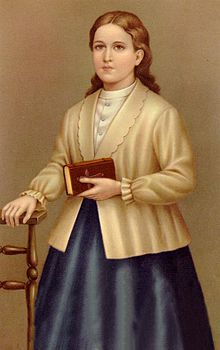 Narcisa de Jesús Martillo Morán (29 October 1832 – 8 December 1869) was an Ecuadorian virgin and Dominican tertiary in the Roman Catholic Church. Martillo was known for her charitable giving and strict devotion to Jesus Christ while living a virginal and austere life of prayer and penance. Her devotion to prayer and the mortification of the flesh was strong and it led her to the decision to live as a member of the Third Order of Saint Dominic in Patrocínio (Peru), where she died on 8 December 1869. Narcisa de Jesús was beatified on 25 October 1992. (Full article...) CategoriesEcuador Articles
General images -The following are images from various Ecuador-related articles on Wikipedia.
Did you know -
Related portalsWikiProjectsThings you can do
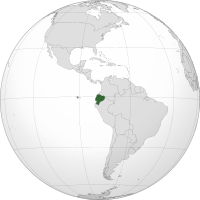
For more information on how you can help, see the WikiProject Ecuador. StubsLocationsEventsPeople
ProductsOrganizationsArts & EntertainmentEcuador topicsAssociated WikimediaThe following Wikimedia Foundation sister projects provide more on this subject:
SourcesDiscover Wikipedia using portals | |||||||||||||||||||||||||||||||||||||||||||||||||||||||||||||||||||||||||||||||||||||||||||||||||||||||||||||||||||||||||||||||||||||||||||||||||||||||||||||||||||||||||||||||||||||||||||||||||||||||||||||||||||||||||||||||||||||||||||||||||||||||||||||||||||||||||||||||||||








